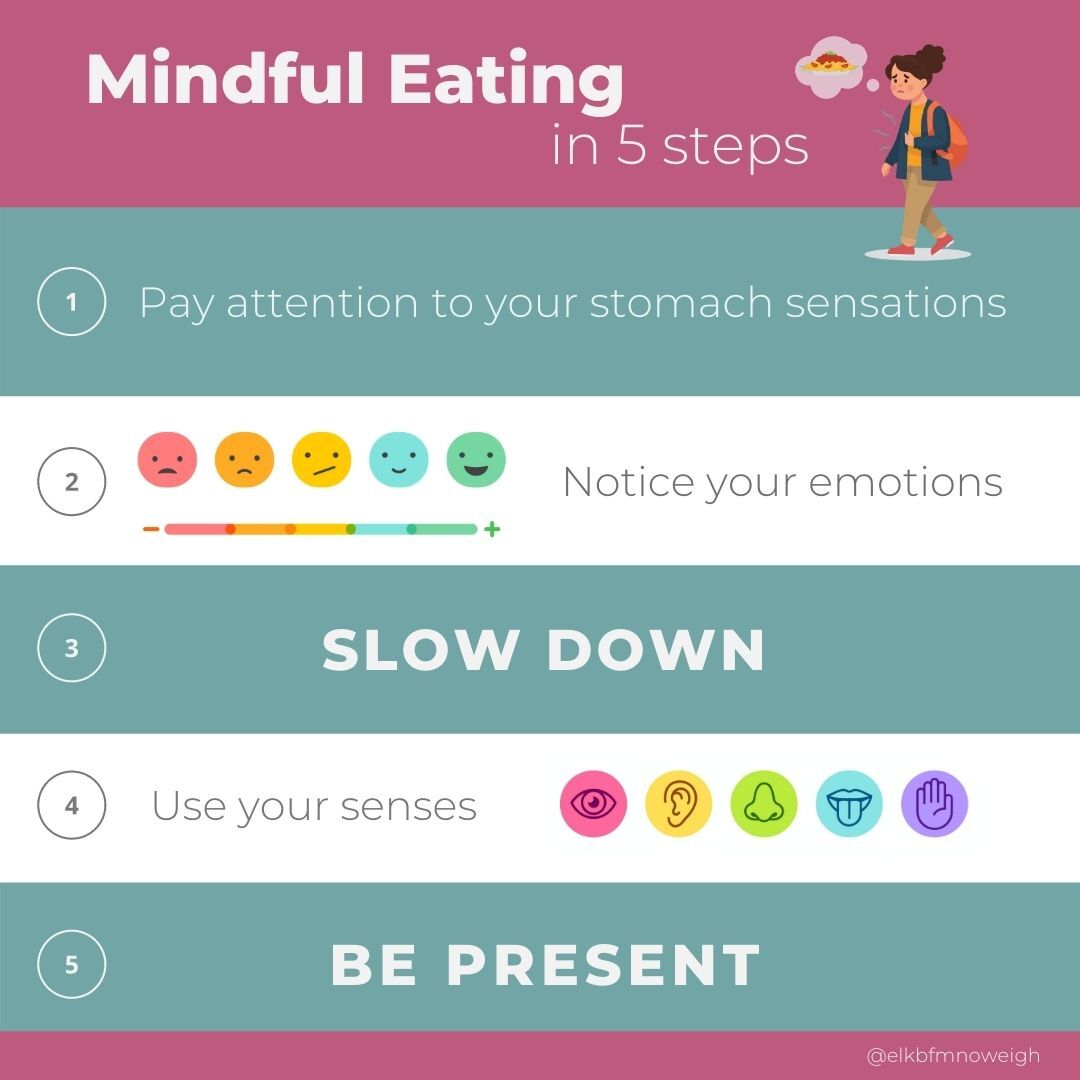If you’ve been looking at ways to reduce body-fat, you’ve most likely come across the term ‘mindful eating’.
You may even have read various explanations of what eating mindfully means. Perhaps you have a great grasp of the concept, or maybe you’ve found the wealth of advice a bit overwhelming. Either way, you may find this post handy.
Mindful eating can be an effective tool in reducing body-fat – as well as preventing regain. And – as is often the case with useful tools – it doesn’t need to be complex. In fact, in our busy and information-heavy worlds, it’s repeatedly the simple strategies that make the most difference. So, with this in mind, let’s slim down the principles of mindful eating into five easy-to-digest, bite-size pieces.
Pay attention to your stomach sensations
Are you actually hungry? We can learn to recognise the feeling in our stomach that means we’re hungry. By paying attention to the sensations in our stomach we can also notice sooner when we’re getting full. Through noticing these signals we can make more mindful choices of when what and how much to eat. Occasionally, we may still choose to eat something when we’re not hungry, but it becomes a mindful choice rather than a mindless habit.
Notice your emotions
Sometimes we can confuse emotions with hunger. We’re all different – stress, anxiety, anger, joy, boredom, contentment can all be triggers that spark a ‘false hunger’. This is when we’re not really hungry (that is, our body doesn’t require nutrients or energy) but we feel like eating. Emotional eating can become so automatic that we don’t even realise what we’re doing.
By contrast, noticing our emotions opens up other possibilities, and we can choose other responses to what we’re feeling. For example, a brisk walk around the block may ease stressful feelings; writing a letter (we don’t send) can diffuse anger; cuddling a loved one, a pet or ourselves is a great way to embrace our contentment.
Be present
When you choose to eat, bring your attention to the present moment. Fully notice your food and the experience of eating. You may find it easier to cut out other distractions (such as TV, internet, reading) but it’s not essential so long as you can also focus on, and fully appreciate, the experience of eating.
Use your senses
Admire the look of your food. Drink it in with your eyes. Breathe in the aromas. Pay attention to its taste and textures. Enjoy your food with all your senses. Fully noticing and taking pleasure in what we’re eating leads to a greater feeling of satisfaction and fullness.
Slow down
It takes around twenty minutes for our gut to communicate signals to our brain that we’ve eaten enough so eating slowly gives us time to register the fullness sensations. It can be helpful to put the food or cutlery down between mouthfuls. This encourages us to finish one mouthful fully before taking the next.
And importantly, rushing isn’t compatible with enjoyment so take your time to eat slowly and enjoy your food. Rather than mealtimes being a race where we overlook the journey and only notice it’s over when we cross the finish line, slow down and allow eating to be a pleasurable and memorable event.
Diet books, calorie counters, kitchen scales – and bathroom scales! None compare with the most effective measuring system we have for regulating our food intake: our body. Intuitively, our bodies know how much (and even what kind of foods) we need in order to be healthfully nourished. Mindful eating provides a way of getting back in touch with what we’re feeling (physically and emotionally) and, thereby, understanding what our bodies actually need.
There is much of merit that can be added to the practice of mindful eating – such as considering: what kind of foods we want to eat, where our food has come from, how it’s ended up on our plate; to name a few. Yet if we first want to get into the intuitive habit of mindful eating, it’s easy to keep it simple with these five principles. It might help to have these steps somewhere where you can easily see them to remind yourself. We have created a phone wallpaper, which you can use for just that. You can download it here.
At NoWeigh we understand that reducing body-fat can be challenging. We continue to research and learn about the difficulties that prevent people from being the size they want to be so that we can develop and provide effective support. To add to our understandings, do drop us a line with the obstacles you face.

Alison Easton
BA(Hons) HPD DipCHyp
Director of Clinical and Creative Development
For nearly 10 years, I have been providing therapy using hypnosis to assist people in changing the beliefs and habits that are making them unwell or unhappy into those that foster health and happiness.
My role at NISAD draws on this experience to write informative and compassionate content to support all that visit us on social media and on our ELK.Health programmes.



